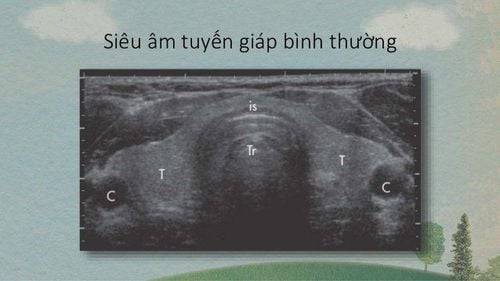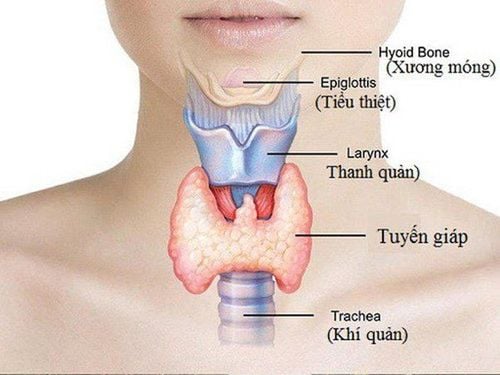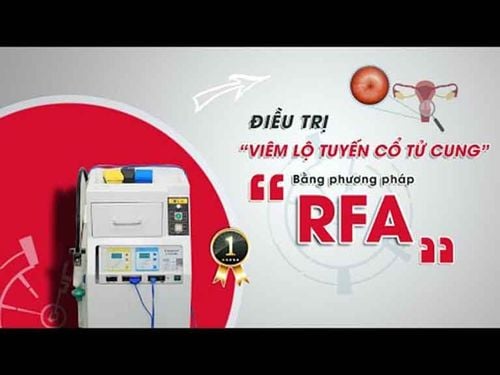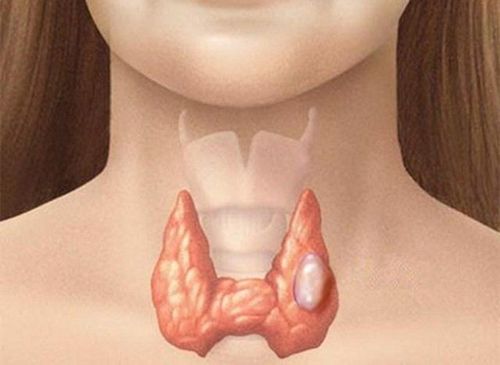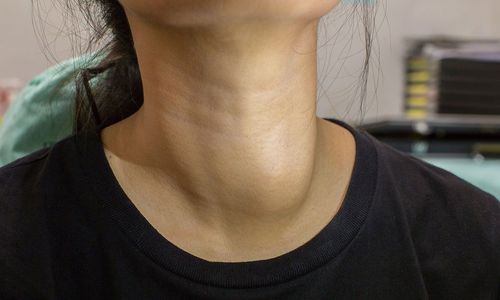This is an automatically translated article.
The article is professionally consulted by Master, Doctor Le Hong Chien - Doctor of Radiology - Intervention - Department of Diagnostic Imaging and Nuclear Medicine - Vinmec Times City International General Hospital. The doctor has many years of experience working in the field of diagnostic imaging and interventional radiology (endovascular intervention and extravascular intervention).Radiofrequency ablation is a method of destroying tumors with heat caused by the friction of ions in the tissue under the influence of high-frequency alternating current. Accordingly, the heat generated by friction dries the surrounding tissue, leading to dehydration of the cells and coagulation of the thyroid tumor, thereby reducing the size of the tumor over time.
1. How does thyroid nodule manifest?
Thyroid nodules, also known as thyroid nodules, are changes in the structure and function of the thyroid gland. The disease is often detected during periodic health checkups, accounting for 4-7% of the population and 5 times more women than men.Currently, benign thyroid nodules are divided into two types: mononodular and multinodular. However, doctors usually feel only large nodules, located near the surface, while small nodules less than 1cm in diameter are difficult to detect on manual examination, requiring the use of thyroid ultrasound technique. In some cases, a benign thyroid nodule may not grow or shrink. However, most benign thyroid nodules progress very slowly. When the patient is correctly diagnosed by the doctor as a benign thyroid nodule and the patient is regularly examined and monitored, he can "live" with the disease.

However, if the thyroid nodule is If it grows large, it can cause local compression, leading to difficulty swallowing, difficulty swallowing, a feeling of choking or hoarseness, voice changes. In some cases, thyroid nodules are overactive (also known as hot or toxic nodules), increasing the production of thyroid hormone, causing metabolic disorders in the body, causing the patient to have symptoms of hyperthyroidism such as: fatigue and muscle weakness, weight loss or gain, heart palpitations, sleep disturbances, fear of heat, excessive sweating...
2. Radiofrequency ablation technique
Radiofrequency ablation is a method of destroying tumors with heat caused by the friction of ions in the tissue under the influence of high-frequency alternating current, located in the sound wave range. Accordingly, an electrode is placed in the center of the tumor and maintained at a destructive temperature of 60 -100°C. Electric current from the machine is delivered to the tumor through a needle-shaped electrode, radio waves are passed into the needle tip and heat is generated. Frictional heat dries the surrounding tissue leading to intracellular dehydration and coagulation necrosis of the tumor.2.1. Indications and contraindications for subjects performing radiofrequency ablation technique
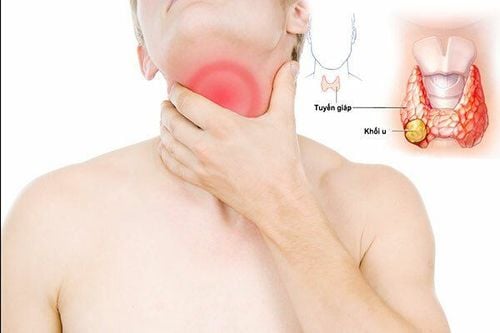
Tumors with symptoms: Neck pain, choking, feeling of neck mass, discomfort and cough. Forming a convex mass in the neck area that affects aesthetics. Tumor compresses, pushes on surrounding structures (trachea, esophagus...) Hyperthyroidism causes clinical hyperthyroidism. Mixed mass (including fluid - solid) recurred after treatment with absolute alcohol. Radiofrequency ablation technique is contraindicated in the following cases:
Thyroid cancer Pregnant women Patients with cardiovascular disease Patients with contralateral vocal cord paralysis.
2.2. The procedure for performing the technique of burning the thyroid gland with high frequency waves

Before performing the technique of burning thyroid nodules by radiofrequency waves, the patient will have the HSBA completed by the interventionist (exam, subclinical results, indications for intervention, commitment). do the intervention,...) and explain the risks and benefits of the method, then the patient will be signed a commitment to perform.
Step 2: Carry out
Ultrasound to determine the exact location of the thyroid nodules, characteristics of the goiter, the size of the nodules and the volume of the goiter. Fine-needle aspiration cytology (FNA) helps confirm the diagnosis of a benign thyroid tumor. In some cases, your doctor will order a blood test to determine thyroid function.
Sterile neck area with iodized alcohol Anesthetize the perithyroid space with Lidocaine 1% Burn the thyroid nodule with ultrasound under ultrasound guidance. Radiofrequency ablation technique is a highly safe treatment method, because it does not have to be invasive skin incision and does not require anesthesia, so the process of monitoring and re-examination after implementation is also simple. than. After the procedure is over, the patient only needs to lie down and observe for 30 minutes to 1 hour, then can appear and resume normal activities without abstinence.
3. Advantages and disadvantages of radiofrequency ablation technique

Maximum preservation of thyroid function. This technique does not require anesthesia, only local anesthesia around the thyroid gland is required. The patient can communicate with the doctor during the procedure. There is no scar at the surgical site due to non-invasive, incisional incision Preserving the benign thyroid gland, causing no hypothyroidism The complication rate is very low, painless and effective in treatment. 3.2. Disadvantages Besides the advantages, this technique also exists some certain disadvantages such as high implementation cost, being a new and advanced technique, so it is not yet popular.
In addition, in cases where the rate of volume reduction after 9-12 months has not met expectations, the doctor may appoint the patient to perform a second time to achieve maximum effect. After that, the patient should be re-examined once a year for 5 years.
After the implementation, the patient should be re-examined and checked periodically after 1, 3, 6 and 12 months, then once a year for 5 years. Full implementation of ultrasound techniques, color doppler, thyroid hormone testing after 1 month...
Radiofrequency ablation technique has been successfully applied in the treatment of benign thyroid tumors at National General Hospital Vinmec Medical Center After treatment at the hospital, the rate of patients with postoperative hematoma <20%, the size of thyroid tumors decreased by 30-50% in volume after 1 month, 60-70% in volume after 3 months. , >90% volume after 12 months.
Thanks to its outstanding advantages, treatment of thyroid tumors with radiofrequency waves is applied not only in the treatment of benign nodular goiter but also being studied in the treatment of recurrent thyroid cancer in the lymph nodes.
To achieve the highest diagnostic and treatment efficiency, Vinmec has equipped the most modern imaging equipment system today, typically the GE Healthcare E9 ultrasound machine with flat transducer, high frequency, HD resolution for clear images. High-frequency ablation technique to treat thyroid tumors under ultrasound guidance allows the doctor to control the entire procedure, minimizing damage to blood vessels, nerves, trachea, esophagus, so it is very safe. while reducing the maximum tumor size.
Periodically after 1 - 3 - 6 months, the patient will be re-examined with an endocrinologist and previous radiologist who directly performed the procedure for the most accurate and objective assessment results.
Please dial HOTLINE for more information or register for an appointment HERE. Download MyVinmec app to make appointments faster and to manage your bookings easily.





